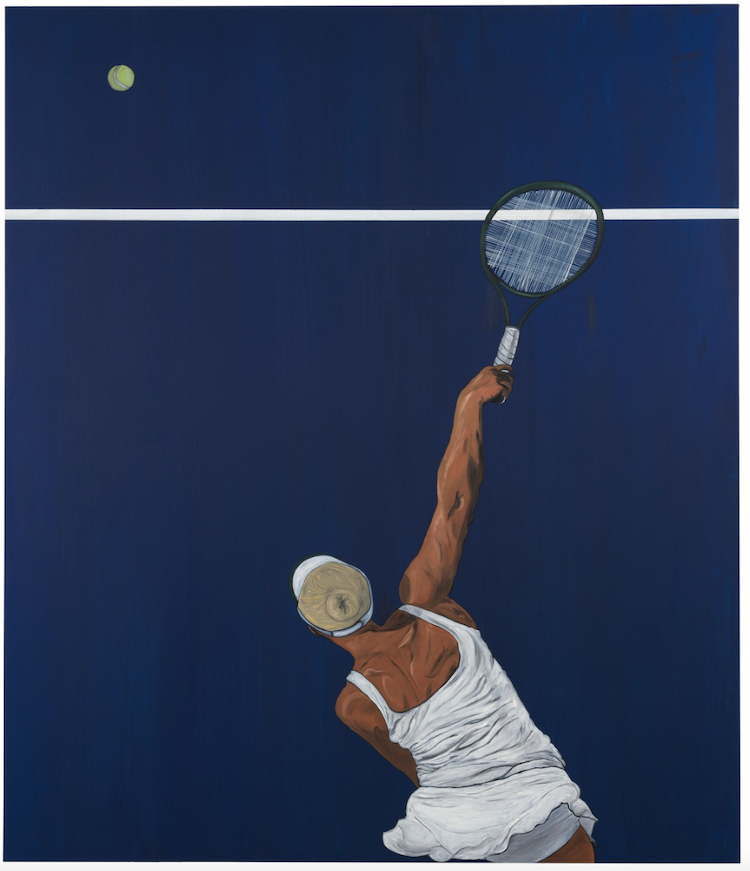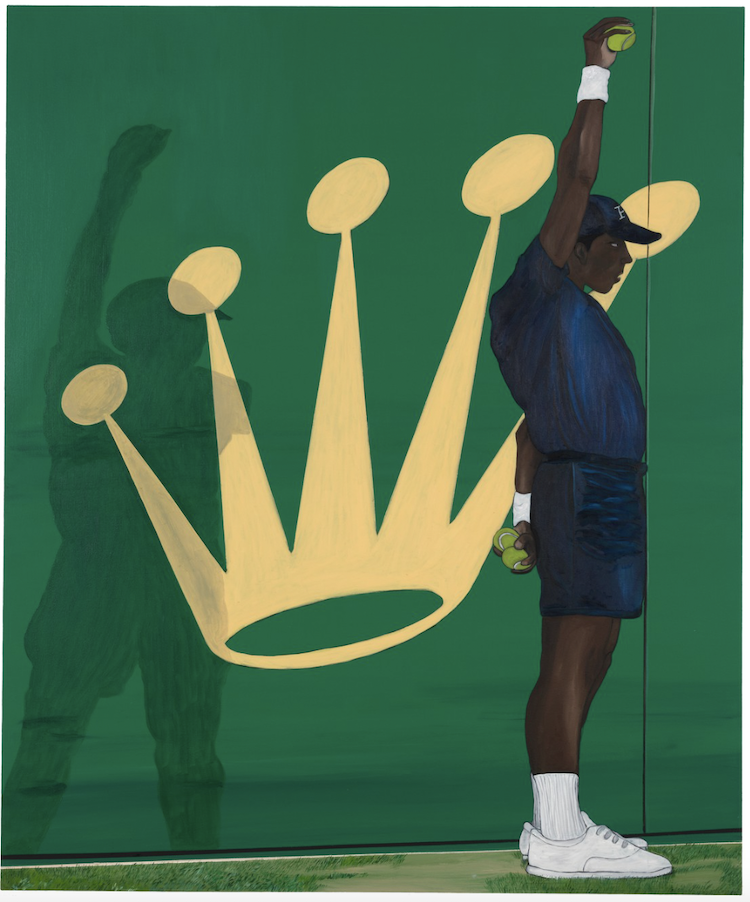Gagosian is pleased to present Advantage In, an exhibition of new paintings and a new installation by Honor Titus at the gallery in Beverly Hills. This is the artist’s first exhibition with Gagosian.
"The tonality of tennis is so very rich and interests me greatly," Titus says. "The implications of leisure and class draw me in, while, as a player, I know it to be an absolutely maddening endeavor. A well-dressed struggle for victory can be analogous to life itself."
In an oeuvre marked by its immediacy and range, Titus draws on architectural, cinematic, musical, sporting, and literary sources (he has described approaching his subjects as if through the eyes of an “unexpected confidante” such as The Great Gatsby’s Nick Carraway). Through this compound perspective, he reframes formal social traditions for an inquiring contemporary audience, additionally underscoring the cultural significance of depicting people of color in the contexts of leisure and luxury.
This holds demonstrably true in the tennis motif. In the tellingly titled Prosperity (all works 2023), Titus depicts a Black ball boy standing in front of a deep-blue backdrop emblazoned with the art-deco Rolex crown logo (otherwise known as the Rolex coronet), his raised arm suggesting a gesture of triumph. Second Serve details the powerful musculature of a player’s arm as she swings her racquet overhead. And in Between Games, a player is shown relaxing on a courtside bench, sipping a well-earned cuppa. While these paintings seem to cast an eye back to simpler times in their celebration of country-club joie de vivre, they remain connected to the present moment, and echo Titus’s painterly intentions of bucking the viewer’s expectations.
Titus’s earlier paintings depict faceless figures inhabiting pared-down urban environments, their anonymity hinting at an attendant sense of loneliness. These works also confront viewers with a deliberately romanticized view of America’s past, although here, depictions of a gleaming 1950s car or a boy in baseball gear signify a less outwardly conflicted, pre-digital age. In more recent work, Titus continues to explore ideas of class, belonging, and inheritance, but he focuses on the ritualized formality of elite events such as debutante balls, and the subjects tend to appear isolated within their coded societal milieux.
Visually, Titus’s paintings have a bold immediacy that derives from their combinations of repeated pattern, rich coloration, and finely rendered detail. Their juxtaposition of flat planes of color with decorative elements is inspired by the work of the nineteenth-century French Symbolist group Les Nabis, which counted Maurice Denis (1870–1943) and Félix Vallotton (1865–1925) among its members. Titus is influenced as well by Fairfield Porter, the Chicago Imagist group, and a raft of painters absorbed in the aesthetics of advertising and modern urban life, from Edward Hopper to Alex Katz. Echoes of Raymond Pettibon are discernible in Titus’s graphic stylizations of the human figure, as is the influence of Henry Taylor, who mentored Titus upon his 2016 arrival in Los Angeles and gave him his first solo exhibition in his studio there in 2020.
At the gallery in Beverly Hills, Titus’s paintings surround an installation that reproduces the format of a tennis court, with artificial turf and painted lines, encouraging viewers to imagine themselves as players in the artist’s game, but the net is replaced with an ornate iron barrier consistent with the decorative flourishes that appear throughout the artist’s work.













